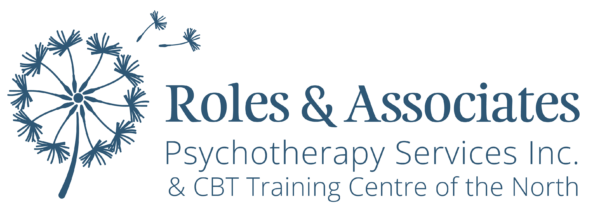What are Anxiety & Panic Disorders?
It is not unusual to experience occasional anxiety, as it is a normal part of life. Some people, however, experience intense, excessive, and constant worry and fear about everyday situations.
Anxiety disorders are very common. They are a group of related conditions, each having distinctive symptoms; however, all have one thing in common: unrelenting, excessive fear or worry in situations that are not actually threatening.
For people with an anxiety disorder, the anxiety does not go away and can worsen over time. For some individuals, feelings of anxiety are difficult to control and are disproportionate to the actual danger. This can result in anxiety attacks or panic attacks (sudden periods of intense fear when there is no clear danger or trigger).
Although these terms are often used interchangeably, there are distinct differences in how the episodes of panic or anxiety attacks come on, how long they last, and what causes them.
An anxiety attack usually has a gradual onset, which means that other symptoms of anxiety tend to precede it. Often this is caused by specific situations that can be identified as the cause of the attack.
Panic attacks differ in that they tend to be spontaneous and have an immediate onset, and can occur at any time regardless of the situation, with no obvious cause being determined as the reason for the attack.
Frequent feelings of anxiety and panic can interfere with daily activities, including our relationships and work performance.
Symptoms of anxiety may include:
- Increased heart rate
- Rapid breathing
- Sweating
- Fatigue/difficulty sleeping
- Nausea
- Headaches
- Distraction
- Poor concentration
Anxiety attacks and panic attacks can also develop, where the symptoms are more acute and cause both emotional and physical distress. Although there is no physical damage, those experiencing panic attacks may be subjected to the sensation that they cannot breathe and feel as though they may be dying due to the intensity of the feelings.
Examples of anxiety disorders include:
- Social anxiety (fear of social situations)
- General anxiety
- Phobias
- Health anxiety
- Perfectionism
- Panic disorders
- Obsessive-compulsive disorder (OCD).
It is also possible for individuals to have more than one anxiety disorder. The causes of anxiety disorders vary, however, there are several risk factors that may increase the possibility of developing an anxiety disorder. These include traumatic life experiences, stress buildup, predisposition/heredity factors, and underlying health issues.
What is Obsessive-Compulsive Disorder (OCD)?
Obsessive-compulsive disorder (OCD) is a type of anxiety disorder characterized by intrusive and frequent obsessions and repetitive and ritualistic behaviours. Individuals with OCD often describe a feeling of being driven by an irresistible urge in order to relieve stress and feel better. OCD is experienced in obsessions and compulsions –persistent and unwanted thoughts, images or urges that trigger distress and recurrent behaviour or mental act(s) carried out to provide relief brought on by the distress of obsessions.
Evidence of OCD can often begin to be seen in childhood, teenage or early adult years. Commonly, symptoms develop gradually in their severity and can be more extreme in times of stress.
Some common symptoms of OCD include:
- repetitive actions (which can be physical or cognitive)
- constantly looking for reassurance
- intrusive and persistent thoughts that are disturbing and distressing
- and/or recurring doubts.
Obsessions might include:
- a fear of contamination
- fear of harm occurring
- excessive concern with exactness resulting in a need for order or symmetry
This may also include anxiety relating to unwelcome thoughts which may include anger, fear of inappropriate public behaviour, or fear of hurting oneself or others. These obsessions may lead to a variety of common compulsions. These can include cleaning, washing, repetitive acts (such as checking doors, windows, or electrical appliances), mental rituals, repeating words or phrases, and/or ordering and rearranging items.

Approaches to Therapy Treating Anxiety, OCD & Panic Disorders
We use a client-specific protocol combining various methods of therapy to treat a wide variety of anxiety disorders.
Acceptance and commitment therapy (ACT) is an action-focused therapy approach where clients learn to accept their emotions and feelings rather than deny or avoid them. They also learn to accept their difficulties and needs as well as work on behavioural changes.
Brainspotting therapy™ (BSP) is a therapeutic process that uses specific points in the client’s visual field to access unprocessed trauma in the subcortical brain. BSP uses relevant eye positions, somatic awareness, focused mindfulness, and the therapist’s attunement to process and release the stored traumas which underlie a wide range of emotional and physical problems. It is a brain-body-based treatment that integrates well with other types of therapies. Often brainspotting is used in conjunction with bilateral sound - music or nature sounds that move back and forth between right and left ears, which balances activation of the right and left brain hemispheres and activates the parasympathetic, or calming, part of the nervous system. Brainspotting therapy was developed in 2003 by Dr. David Grand, an EMDR therapist and relational analyst.
Cognitive behavioural therapy (CBT) is a goal-oriented type of therapy that teaches the client how to first recognize and then change unhealthy ways of thinking and behaving. With the use of in-session practice and homework of skills to work on between sessions, this treatment is tailored to fit the client's goals and is a highly evidence-based collaborative psychotherapy.
Compassion focused therapy (CFT) is a type of psychotherapy that encourages individuals to be compassionate toward others as well as themselves. This type of therapy is primarily used for clients that struggle with self-criticism and self-contempt. CFT often includes exercises to practice mindfulness and appreciation. Sessions focus on examining the ways we talk to ourselves, where we might have first developed the particular tone and word choices used, and how we can make changes to how we speak to ourselves to increase self-compassion and appreciation.
Exposure and response prevention (ERP) is a cognitive and behavioural type of therapy used to treat OCD, where the therapist first teaches the client ways to cope with their anxiety, such as methods of relaxation, how to address and how to stop intrusive and obsessive thoughts. Next, the therapist encourages the client to work on being exposed (safely) to their triggers, in order to learn how to cope with them while in the moment without resorting to compulsions. In time, clients report their symptoms subsiding as they gain control over their thoughts.
Eye movement desensitization and reprocessing (EMDR) is another structured approach to treating PTSD, as well as trauma. Clients will briefly access a traumatic memory during sessions while being guided and supported by the therapist who will support them to keep them grounded. This type of therapy is ideal for clients who prefer not to verbalize their traumatic experiences, which is necessary for PE, but who still want to work on trauma memories and related symptoms.
It is the nature of the mind to be made up of subpersonalities or parts. Subpersonalities are aspects of our personality that interact internally, similar to the ways in which people interact. These sub-personalities can consist of wounded parts and painful emotions such as anger and shame. Underlying the parts is a person’s core or true Self. The Self can and should lead the individual's internal system.
Internal Family Systems (IFS) therapy helps individuals achieve balance and harmony within their internal system and subpersonalities/parts.
Using IFS, the clinician will support individuals in developing their Self so it can be an effective leader in their internal system. When the Self is in the lead, the parts will provide input to the Self and help to elevate “wounds” so that individuals can find their natural balance. IFS is suitable for individuals, couples, and families, and it can effectively treat a variety of conditions such as depression, anxiety, panic, phobias, trauma, substance use, physical health conditions, and general well-being.
Psychodynamic psychotherapy is the oldest of the modern therapies and focuses on unconscious processes as they are manifested in the client's present behaviour. The goals of psychodynamic therapy are client self-awareness and understanding of the influence of their past on their present behaviour.
Brief psychodynamic psychotherapy enables the client to examine unresolved conflicts and symptoms that arise from past relationships and manifest themselves in their day to day life as current struggles.
Several different approaches to brief psychodynamic psychotherapy have evolved from psychoanalytic theory and have been used to treat many different mental health presentations.
As the name suggests, solution-focused brief therapy (SFBT) is a short-term goal-focused therapeutic approach largely geared towards discussing solutions. There is a brief need for discussion around the problem to examine what it is and explore potential opportunities to address it, but that is not the primary focus of this approach. This approach is rooted in the here and now, with an identified future-oriented goal involving lessening the negative impacts the identified problem has in your life.
The goal of SFBT is to collaboratively identify realistic solutions in as brief of a timeline as possible. SFBT is a versatile approach that can be used in areas such as individual, couples, or family therapy addressing anywhere from high stress life events to normal life stressors.
Contact Form
To request an appointment, please fill out your information using our secure form below and we will be in touch shortly. For more information, please contact us by phone or email: 705-929-1612 ext.6, [email protected].

